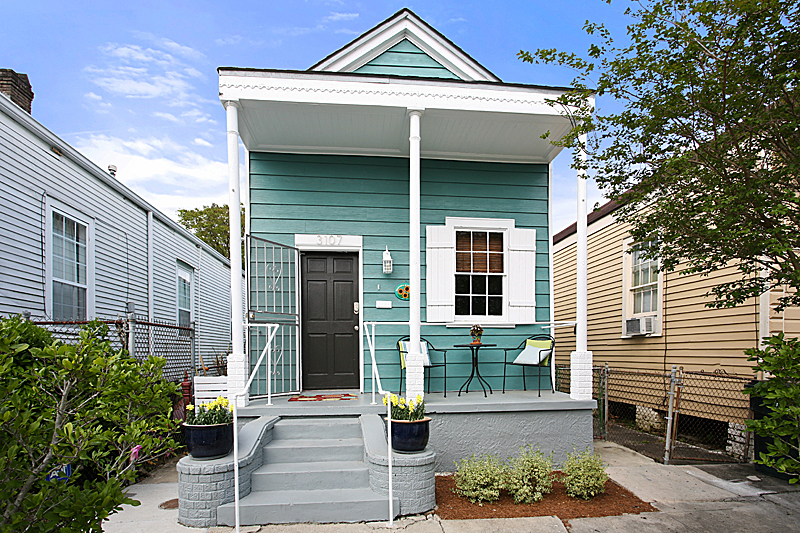Parkview

Each year the annual Endymion parade brings extended families onto the lawns of Parkview for an exuberant, weekend-long Mardi Gras picnic. A few weeks later Mardi Gras Indians from around New Orleans gather on the banks of Bayou St. John for a brilliant display of costumes and singing, known as “Super Sunday,” before parading downtown. Both are family events, but their cultures couldn’t be further apart. Yet that’s the beauty of Parkview, one of New Orleans’ newest historic districts. In this 20th-century neighborhood between beautiful City Park and the former path of the Carondelet Canal, different cultures express themselves without clashing.
The Carondelet Canal, dug in 1792 to connect New Orleans to coastal shipping, first put the area now known as Parkview on the map. What that map showed, actually, was cipriere or “cypress swamp.” Until improvements in drainage after 1900 and the introduction of the screw pump in 1913, Parkview was part of the swampy expanse known as “back o’ town.” Several dairy farms, most notably the Allard Plantation, occupied what firm land there was here at the edge of the bayou. Development began in earnest in 1902 and continued through the 1920s, which is also when most of the land that forms present-day City Park was obtained by the city.
As a result of Parkview’s concentrated development, the houses along the oak-shaded streets have a lot of stylistic consistency, with double shotguns, raised basement houses and bungalows being the favored forms. Pre-20th century houses are rare. There’s a small town tranquility to Parkview caused in part by its irregularly laid out streets and hidden courts, such as St. John’s Alley and Bungalow Court. But, at the same time, Parkview is a vital neighborhood that holds on to its residents while also attracting new young families and singles. The 1500-acre park, with its tennis courts, golf course, museum, open-air theaters, lagoons and jogging and biking trails, is a great attraction. A new spur line will connect the area with downtown via the rebuilt Canal Streetcar in 2004. Restaurateur Ralph Brennan chose City Park Avenue for his newest establishment, which will draw a regular nightly crowd to the park’s edge where the live oak trees dripping in Spanish Moss create a shadowy primordial landscape.
Delgado Community College bustles day and night with classes, and elementary schools and the New Orleans School of Science and Math are also nearby. World class exhibitions at the New Orleans Museum of Art come literally to residents’ doorsteps, and the annual Celebration in the Oaks turns the park into an elaborate exhibit of holiday lights. Thursday afternoons bring the Crescent City Farmers Market to the newly refurbished, and now residential, American Can Company on Orleans Avenue.
Courtesy of the Preservation Resource Center of New Orleans.


